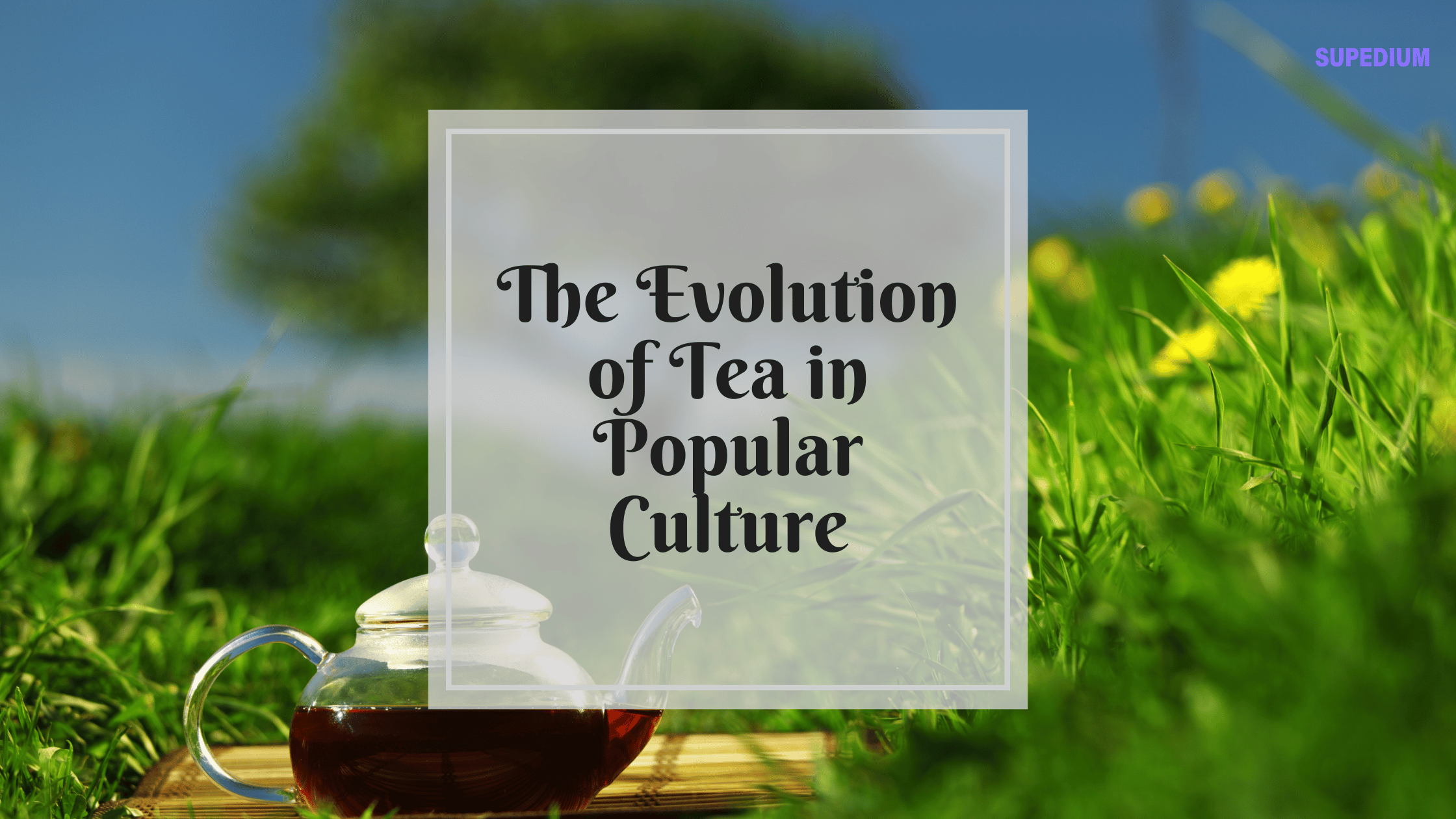Table of Contents
![]()
Tea, a beverage with a rich history spanning thousands of years, has evolved significantly in popular culture, reflecting broader social and cultural trends. From its origins in ancient China to its current status as a global icon, tea has not only shaped but also been shaped by various cultural narratives. This article explores the journey of tea through popular culture, tracing its historical evolution, modern representation, and future trends.
Historical Overview of Tea
Origins of Tea
Tea’s origins can be traced back to ancient China, where legend credits Emperor Shen Nong with its discovery around 2737 BCE. The tale goes that Shen Nong, while boiling water, had leaves from a wild tea tree fall into his pot, resulting in the first cup of tea. Initially used for medicinal purposes, tea eventually became a staple in Chinese society. By the 9th century, tea was being consumed in Japan, introduced by Buddhist monks who had traveled from China.
Tea in European Culture
Tea’s introduction to Europe in the 17th century marked a significant cultural shift. The Dutch were the first to import tea to Europe, but it was the British East India Company that popularized it in England. By the early 18th century, tea drinking had become a fashionable pastime among the British elite. The establishment of tea gardens and the ritual of afternoon tea, popularized by Anna, Duchess of Bedford, cemented tea’s place in British culture.
Tea in Popular Culture: Historical Perspectives
Tea in Literature
Tea has long been a symbol of various social and cultural themes in literature. In classical Chinese texts, tea is often depicted as a symbol of refinement and intellectualism. In British literature, tea appears as a marker of social class and domestic life. Jane Austen’s novels frequently feature tea scenes that reflect the social dynamics of the time, while Charles Dickens used tea to illustrate character traits and social settings.
Tea in Art and Media
Tea’s influence extends to the visual arts as well. Paintings from the 18th and 19th centuries often depict tea drinking as part of the social fabric. For example, artists like Jean-Baptiste-Siméon Chardin captured the domestic rituals surrounding tea in their works. Early cinema and theater also reflected tea culture, though often with a satirical or exoticized lens, as seen in films from the early 20th century.
Tea in Modern Popular Culture
Tea in Literature and Film
In contemporary literature and film, tea continues to play a significant role. Books like “The Tea Girl of Hummingbird Lane” by Lisa See explore tea’s cultural significance in different contexts. Films and television series such as “Downton Abbey” and “The Crown” frequently feature tea scenes that highlight social class and cultural practices. These portrayals not only reflect historical practices but also continue to shape modern perceptions of tea.
Tea in Music and Entertainment
Tea has also made its mark in music and entertainment. Songs like “Tea in the Sahara” by The Police and various music videos feature tea as a metaphor or thematic element. Tea-themed events, such as festivals and themed parties, further emphasize its place in modern pop culture. These events often celebrate tea’s versatility and its role in social gatherings.
Global Influence and Cross-Cultural Impact
Tea in Different Cultures
Tea’s global journey illustrates its adaptability and significance across cultures. In Japan, the tea ceremony, or “chanoyu,” embodies the principles of harmony, respect, purity, and tranquility. In India, chai culture reflects a vibrant, communal aspect of tea drinking. Western cultures have adopted and adapted these traditions, leading to diverse tea practices and innovations.
Tea as a Symbol
Tea symbolizes various cultural values, from sophistication and status to relaxation and comfort. In Britain, tea is associated with tradition and social rituals. In other cultures, it represents hospitality and communal bonds. These symbols reflect tea’s ability to transcend cultural boundaries and resonate with different values.
The Role of Tea in Contemporary Media and Technology
Social Media and Tea Culture
Social media has played a significant role in shaping contemporary tea culture. Influencers and tea enthusiasts on platforms like Instagram and TikTok share their love for tea through aesthetically pleasing photos and videos. Viral trends, such as unique tea recipes or challenges, highlight tea’s adaptability and appeal in the digital age.
Tea in Digital Content
Blogs, podcasts, and YouTube channels dedicated to tea explore various aspects of tea culture, from brewing techniques to historical insights. Online communities and forums provide spaces for tea lovers to connect, share knowledge, and celebrate their passion. This digital content contributes to the ongoing evolution of tea culture in the 21st century.
Commercialization and Branding
Marketing Strategies
The commercialization of tea has led to innovative marketing strategies. Branding and packaging trends have evolved to cater to diverse consumer preferences, from artisanal blends to health-focused options. Celebrity endorsements and collaborations have further boosted tea’s visibility and appeal.
Economic Impact
The global tea market has seen significant growth, driven by both traditional consumption and new trends. Popular culture influences, such as media representations and branding efforts, have contributed to changing tea consumption patterns and expanding market reach.
Future Trends
Innovations in Tea Culture
Future trends in tea culture include a focus on specialty blends and health-oriented teas. Innovations such as smart tea makers and new brewing technologies are likely to shape the future of tea consumption. These developments reflect ongoing interest in tea’s versatility and potential benefits.
Predictions for Tea in Popular Culture
Tea’s role in popular culture is expected to continue evolving. Shifts in cultural perceptions and emerging trends may influence how tea is represented and consumed. As tea adapts to new contexts and preferences, its cultural significance will likely remain a vibrant and evolving aspect of global culture.
Conclusion
Tea’s journey through popular culture reflects a rich tapestry of historical, social, and cultural influences. From its ancient origins to its modern representations, tea has not only shaped cultural narratives but also been shaped by them. As tea continues to evolve, it will undoubtedly remain a significant and beloved part of global culture.
Share This





Be the first to comment